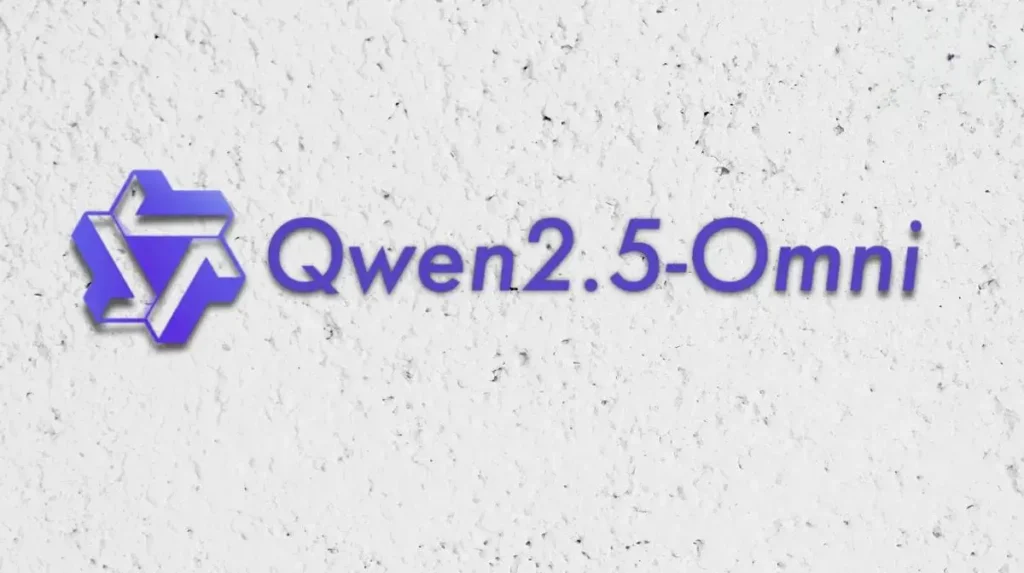How to Run Qwen2.5-Omni-7B Model: A Comprehensive Guide
Alibaba’s recent release of the Qwen2.5-Omni-7B model marks a significant advancement in multimodal artificial intelligence. This model adeptly processes diverse inputs—text, images, audio, and video—and generates both text and natural speech responses in real-time. Its compact design allows deployment on devices such as smartphones and laptops, making it a versatile choice for various applications.

What is Qwen2.5-Omni-7B?
Qwen2.5-Omni-7B is an end-to-end multimodal AI model developed by Alibaba Cloud’s Qwen team. It is engineered to handle multiple input modalities and produce corresponding outputs seamlessly. Key features include:
- Thinker-Talker Architecture: This innovative design separates the model’s processing and speech generation functions, enhancing efficiency and clarity.
- TMRoPE (Time-aligned Multimodal RoPE): A novel positional encoding technique that synchronizes video and audio inputs, ensuring precise alignment between visual and auditory data streams.
- Real-Time Streaming: Supports chunked input and immediate output, facilitating real-time interactions suitable for applications like voice assistants and agents.
Why Run Qwen2.5-Omni-7B?
Deploying Qwen2.5-Omni-7B offers several advantages:
- Multimodal Processing: Handle diverse data types, including text, images, audio, and video, enabling comprehensive AI solutions.
- Real-Time Interaction: The model’s design supports immediate responses, making it ideal for interactive applications.
- Edge Device Compatibility: Its lightweight architecture allows deployment on devices with limited resources, such as smartphones and laptops.
How to Run Qwen2.5-Omni-7B
To run the Qwen2.5-Omni-7B model, follow these steps:
1. System Requirements
Ensure your system meets the following minimum requirements:
- Operating System: Linux or macOS
- Processor: Multi-core CPU
- Memory: At least 16 GB RAM
- Storage: Minimum of 10 GB free disk space
- Python: Version 3.8 or higher
- CUDA: For GPU acceleration, CUDA 11.0 or higher is recommended
2. Installation Steps
a. Set Up the Environment
- Clone the Repository: Begin by cloning the official Qwen2.5-Omni repository from GitHub.
git clone https://github.com/QwenLM/Qwen2.5-Omni.git
cd Qwen2.5-Omni- Create a Virtual Environment: It’s advisable to use a virtual environment to manage dependencies
python3 -m venv qwen_env
source qwen_env/bin/activate # For Windows, use 'qwen_env\Scripts\activate'- Install Dependencies: Install the required Python packages.
pip install -r requirements.txtb. Set Up the Model
- Download Pre-trained Weights: Obtain the pre-trained model weights from the official source.
wget https://example.com/path/to/qwen2.5-omni-7b-weights.pth- Configure the Model: Edit the configuration file (
config.yaml) to set parameters such as input modalities, output preferences, and device settings.
c. Run the Model
- Start the Interactive Session: Launch the model in interactive mode to process inputs and receive responses.
python run_model.py --config config.yaml- Provide Input: Enter text, upload images, or provide audio/video inputs as specified in the configuration.
- Receive Output: The model will process the input and generate appropriate text or speech responses in real-time.
What Are the Key Features of Qwen2.5-Omni-7B ?
Qwen2.5- Omni-7B incorporates several advanced features:
Thinker-Talker Architecture
This architecture separates the model’s reasoning (Thinker) and speech generation (Talker) components, allowing for independent and efficient processing. The Thinker handles input processing and text generation, while the Talker converts the generated text into natural speech.
TMRoPE: Time-Aligned Multimodal RoPE
TMRoPE ensures precise synchronization of video and audio inputs by aligning their timestamps. This synchronization is crucial for applications requiring seamless integration of visual and auditory data, such as video conferencing and multimedia content analysis.
Real-Time Streaming
The model’s design supports real-time streaming of inputs and outputs, enabling immediate processing and response generation. This feature is essential for interactive applications like voice assistants and live translation services, where latency must be minimized.
What Sets Qwen2.5-Omni-7B Apart from Other AI Models?
Qwen2.5-Omni-7B distinguishes itself through several key features:
Multimodal Integration: Unlike models confined to a single modality, Qwen2.5-Omni-7B processes and generates multiple data types, including text, images, audio, and video, enabling seamless integration across various media.
Real-Time Processing: The model’s architecture supports real-time streaming of inputs and outputs, making it ideal for interactive applications such as voice assistants and live content generation.
Unified Learning Approach: Employing an end-to-end learning system without separate encoders for each modality, Qwen2.5-Omni-7B enhances contextual understanding across different media types, streamlining processing and improving efficiency.
Competitive Performance: Benchmark evaluations reveal that Qwen2.5-Omni-7B outperforms similarly sized single-modality models, particularly excelling in audio processing capabilities and achieving performance levels comparable to specialized models like Qwen2.5-VL-7B.
What Are the Practical Applications of Qwen2.5-Omni-7B?
The versatile capabilities of Qwen2.5-Omni-7B open up a wide array of practical applications:
Interactive Voice Assistants: Its real-time speech generation and comprehension make it suitable for developing responsive voice-activated assistants.
Multimedia Content Creation: The model’s ability to process and generate text, images, and videos facilitates the creation of rich multimedia content for various platforms.
Multimodal Data Analysis: Researchers and analysts can leverage its capabilities to interpret and correlate data across multiple modalities, enhancing data-driven insights.
Assistive Technologies: By understanding and generating speech, Qwen2.5-Omni-7B can aid in developing tools for individuals with disabilities, improving accessibility.
API Access
CometAPI offer a price far lower than the official price to help you integrate Qwen2.5-Omni-7B API , and you will get $1 in your account after registering and logging in! Welcome to register and experience CometAPI.
CometAPI acts as a centralized hub for APIs of several leading AI models, eliminating the need to engage with multiple API providers separately.
Please refer to Qwen2.5-Omni-7B API for integration details.CometAPI has updated the latest QwQ-32B API.
Conclusion
Qwen2.5-Omni-7B represents a significant milestone in the evolution of multimodal AI, combining efficient design with robust performance across various data types. Its real-time processing capabilities and unified learning approach make it a valuable tool for developers and businesses aiming to integrate advanced AI functionalities into their applications. As AI continues to evolve, models like Qwen2.5-Omni-7B pave the way for more integrated and responsive AI systems.

